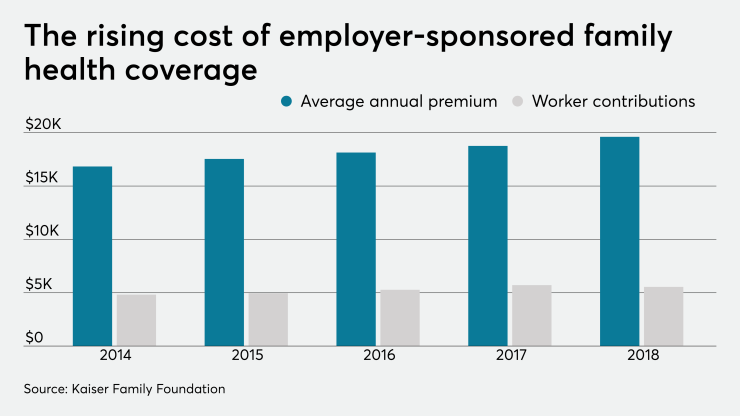Be more active. Eat better. Rest more. Individually, we know that these and other positive habits lead to better health and all the benefits that derive from it. In theory, it’s something we can all get behind but in practice even the best of us often default to short-sighted decisions that are not in our best interests.
But when it comes to effecting group change on this front, we witness similar patterns: Short-term thinking overshadows the goal of long-term gains. Entire industries have tried — and largely failed — to help their workers lead healthier lives.
But what if the silver bullet is considering how and why organizations can change to improve the health of their workforce. The ROI, after all, is clear — a healthy workforce means higher job satisfaction and greater productivity.
In short, healthy workers are good for business.
So how do we get insurers, technology companies, retailers and other employers to take actions that are in their long-term best interests, but may require changes to the way they operate today?
In my role I spend a lot of time considering this conundrum. The good news is that there are currently companies out there effectively linking employee health to business strategy.
Both organizations have histories of success spanning a century. In both cases, management credits their success, in large part, to their genuine passion around supporting their employees. Both foster a culture of well-being among their people, not only for goodwill it engenders but because it makes good business sense.
Look at the numbers: Baylor’s wellness program claims savings of $1.4 million. And thanks to Ericsson’s program, more staff meet federal guidelines for physical activity and nutrition, resulting in $385 annual savings in prescription costs per member.
It’s a philosophy that’s catching on. Just this summer, the
Bold, yes. Welcome, certainly. But not necessarily new thinking.
In 2006, in a
While this truth holds true regardless of industry sector creating shared value is no small feat. It represents a paradigm shift to an entrenched business approach. To the skeptics, our message is this: We hear you. But words are empty without actions and results to buttress them. That’s why highlighting programs like Baylor and Ericsson’s is so critical — it shows that people are out there getting it right. And it’s behind our own commitment, in concert with our global insurance partners, to make
It all boils down to this: America’s corporate leaders have a choice to make — will they focus on the short-term dollar while their employees’ health deteriorates or will they invest in employee well-being to ensure company competitiveness for the future?






